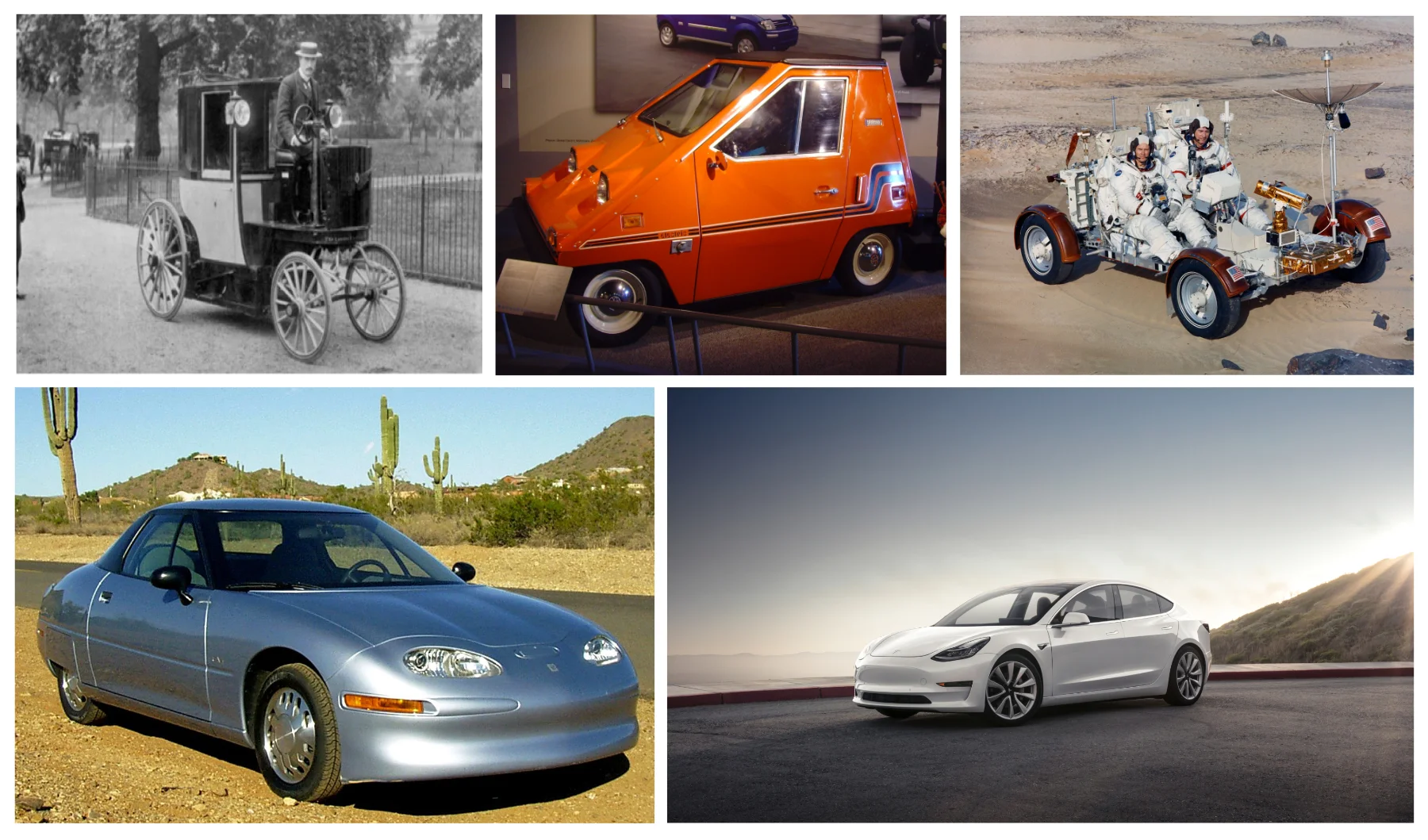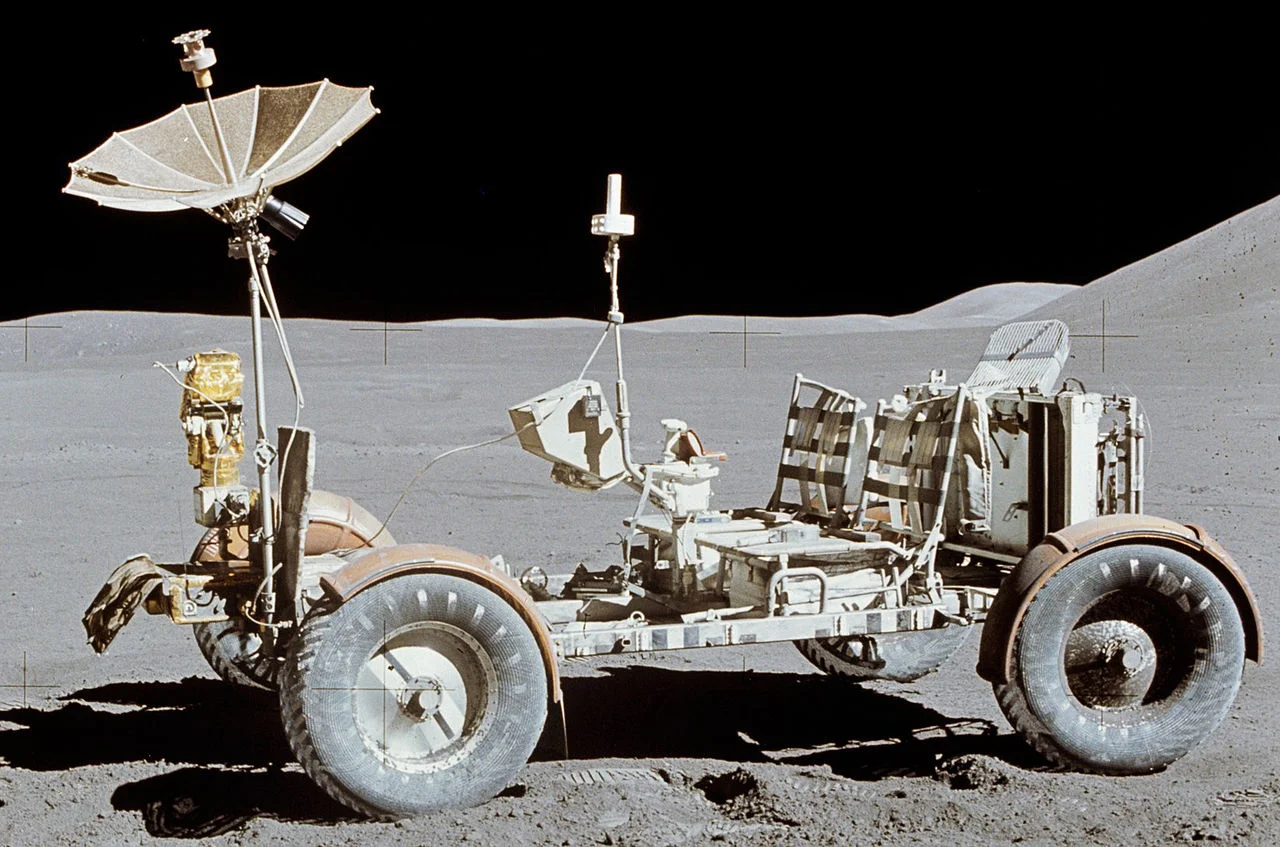Electric Vehicles. A Brief History...
Take a Journey through an Electric powered time
Many see Electric vehicles as a futuristic take on transport, born out of recognition that our planet is suffering a bit. Whilst the near future is certainly electric, and our planet IS suffering, EV’s certainly aren’t as futuristic as they may seem. We take a look at some of history’s Electric Vehicles.
Walter Bersey’s 1897 Electric Cab, London’s first self propelled Taxi.
You may be surprised that Electric vehicles were being thought about as early as the 1830’s, with Robert Anderson credited with creating the first (albeit crude) Electric Carriage. By the turn of the century, Electric Cars were considered normal, sitting alongside combustion engine and steam powered vehicles. Each had their own benefits and challenges, but it wasn’t as clear cut as you may think. The first self propelled Taxi’s in London, Walter Bersey’s 1897 cab (as pictured above) were battery powered and had a top speed of 9 mph and a 30 mile range. A whole host of electric vehicles followed, especially across the pond. Jay Leno, the popular American TV show host, and Car fanatic owns a Baker and can be seen driving it in the video below. It shows that the cars of the time were very much usable, but reserved for the wealthy. The interior of the Baker was quite plush, with a choice of blue, green or maroon panels, and the ability to seat 4 passengers, it certainly wasn’t accessible for the masses. The Baker range of cars were able to travel 50-80 miles on a single charge, but at a maximum of 14 mph.
What went wrong?…
Enter the main protagonist, the Ford Model T, the right vehicle at the right time. On the 10th January 1901, the Lucas well or “Gusher” at Spindletop Hill, struck Oil, starting the Texas Oil Boom. With it came decades of rapid industrialisation, and plummeting petrol prices. Advances in assembly lines meant that the Model T could be produced efficiently, at a low cost. For those who aren’t aware, the Model T is considered one of the most important vehicles of all time because of this. For comparison, a 1910 Baker Electric cost $2,800 whilst the Model T was priced at $900. Just a year later, Ford had reduced the price to $680, bottoming out at $260 in 1925. Texas had found oil, production lines continued to advance. Electric vehicles were pretty much forgotten by the 1930’s. By 1927, Ford had produced 15 million cars. EV’s were finished.
Electric Resurgence
The current resurgence of EV’s has been a long time coming. With renewed concerns about air pollution, and potential rises in fuel costs, the 60’s and 70’s gave birth to many concept vehicles, such as the Chevrolet Corvair and Electrovette, but few were ever put into production. One did make the cut, and was used for one of histories most significant events. The Lunar Roving Vehicle, dubbed “Moon Buggy”, which technically not a roadworthy vehicle, was a huge success and played a major role in the Apollo 15,16 and 17 programs. Scientist-astronaut Harrison Schmitt of Apollo 17 said, "The Lunar Rover proved to be the reliable, safe and flexible lunar exploration vehicle we expected it to be. Without it, the major scientific discoveries of Apollo 15, 16, and 17 would not have been possible; and our current understanding of lunar evolution would not have been possible." The Buggy was clearly capable on the Moon, but back on Earth, EV’s still weren’t receiving mainstream success.
Sebring-Vanguard CitiCar
The Sebring-Vanguard, CitiCar. Produced between 1974 and 1977.
Produced by American company Sebring-Vanguard, the CitiCar was in production between 1974 and 1977. With a range of 40 miles and a top speed of 50 mph, the CitiCar was built as a response to the US fuel crisis of the 1970’s and inspired by a Golf Cart. The small Wedge shape vehicle was considered to be an experiment of minimalist automotive design, and as a basic people mover. Production of the CitiCar continued until 1977 with just over 2,000 units produced.
ZAGATO ZELE
The Zagato Zele 1000. Image courtesy of RM Sotherby’s
When Italian design house Zagato created an Electric Microcar, The Zele (known as the Elcar in the U.S), they were a very long way from the designs they were famous for creating with manufacturers such as Alfa Romeo, Aston Martin, Ferrari, Maserati and Jaguar. The Zele was derived from the Fiat 500 and 124, had a range of 50 miles, and a top speed of 25 mph. Only 500 models were made.
ENFIELD 8000
The Enfield 8000.
Developed in the UK, The Enfield 8000 was produced on the Greek island of Syros. 120 were built, using suspension parts from a Hillman Imp, doors from the Mini and a rear axle derived from the Reliant Robin. Top speed was 48 mph with a range of 40 miles. Johnny Smith, from the popular youtube channel Fully Charged Show, modified an Enfield 8000 into a drag car called “Johnny’s Flux Capacitor”
GM EV1
The GM EV1
The EV1 was the first mass produced, and purposely designed Electric Vehicle from a major manufacturer and the first and only car created by General Motors to be marketed under the “GM” brand (instead of one of their divisions, such as Chevrolet). The EV1 was only available through a lease arrangement, and built as a “real world engineering evaluation”, which was effectively a market study into whether or not EV’s were feasible. The EV1 was met with positive reviews, but GM believed that Electric vehicles were an unprofitable niche. Despite being met with fierce competition from drivers, GM cancelled all of the lease arrangements, denied customers the opportunity to purchase their EV1’s and subsequently they were crushed. Out of the 1,117 made between 1996 and 1999, 40 were donated to museums and educational institutes (with the Electric drivetrain de-activated). The only remaining intact EV1 was donated to the Smithsonian Institute.
TESLA ROADSTER
Tesla Roadster
A name that is now synonymous with EV’s, Tesla, started life producing 2 seat sports cars. The Roadster used the chassis from a Lotus Elise and was the first mass production Electric Vehicle to use Lithium-Ion battery cells. It was also the first production EV to travel more than 200 miles per charge. Around 2,500 Roadsters were sold between 2008 and 2012. Tesla announced in November 2017 that a second generation Roadster would be available from 2020, with a 620 mile range, and a 0-60 mph time of just 1.9 seconds.
Where Next?
The future of EV’s is bright, with models in the pipeline from pretty much every major manufacturer, and a whole host of new manufacturers being born (think Rivian, Byton, Polestar etc), times certainly are a changing. The combustion engine has served us very well, but it’s time to say goodbye. Only time will tell exactly how quickly, but if another “Model T” arrives it’s going to be soon.








